Are your cocktails inconsistent? Feel like you need help pouring out exact measurements of your spirits? If so, using a cocktail jigger is the perfect solution!
It used to be that “eying it” was the way to go, but using a basic bar jigger to make sure your drinks are made the same way every time is way more commonly accepted these days.
Today, I’ll share some useful tips and tricks you need to know when shopping for this essential bartending tool and for pouring all your drinks with accuracy and precision.
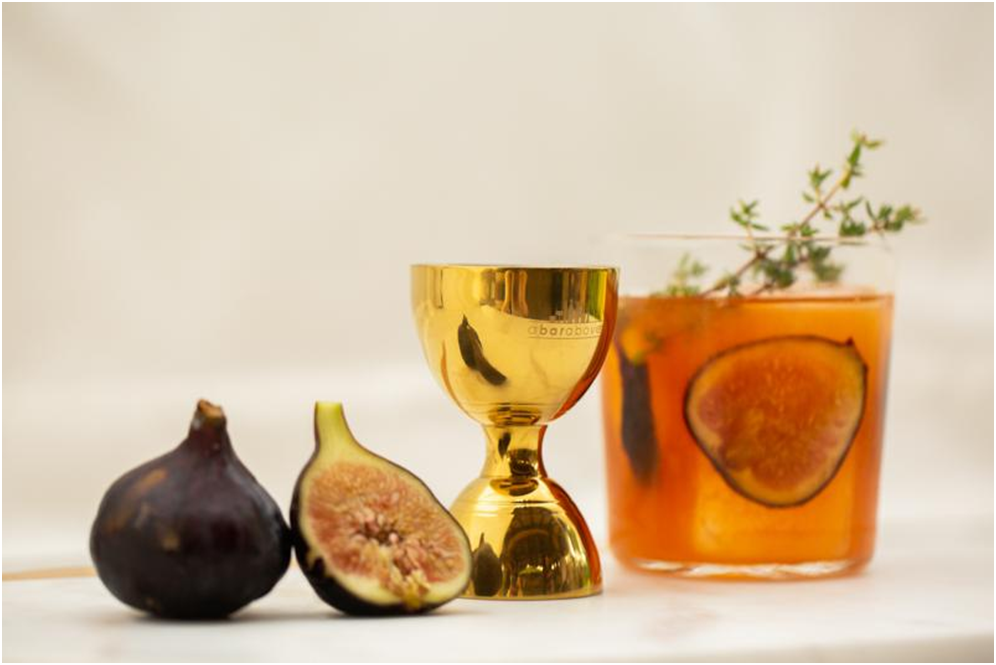
Copyright A Bar Above
WHAT IS A JIGGER?
With measurement markings either on the inside or outside of this hourglass-shaped tool, this mini measuring cup is what you use to calculate perfect measurements of each liquid ingredient in your drink recipes.
As a bartender standard, this simple little tool is the ideal gift for any cocktail lover– it’ll take their drinks to the next level by ensuring accuracy. Every. Time.
(And if you’re shopping for yourself or someone else who loves cocktails and is just getting started, I recommend checking out our beautiful gift box of a bunch of tools they’ll need, like a shaker tin, strainer, mixing glass, and cocktail picks.)
If you want to make sure the capacity measurements of your own double-sided jigger are really accurate, this article will guide you through how to check jigger measurements using a basic kitchen scale.
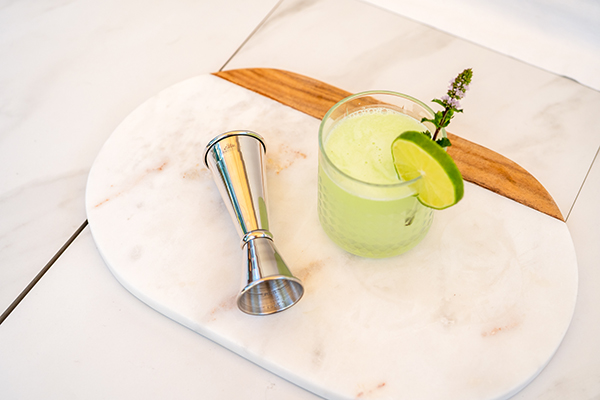
Copyright A Bar Above
THINGS TO CONSIDER WHEN BUYING AND USING A JIGGER
OK, so you’re convinced that a jigger is going to give you a quality drink every time. Now here are a few things to consider when buying:
RIGHT SIZES OF JIGGERS
Choosing the right size jigger is super important when it comes to accurate measurements of drinks. A standard jigger should hold between 1-1/2 ounces and 2 ounces of liquid on the larger side (assuming you’re using a double-sided cocktail jigger and not just a jigger shot glass).
A smaller, one-sided jigger might only hold up to 1 ounce of liquid, which just isn’t very useful, if I’m being honest. Make sure you know which size you need or liquor measurement in cocktail recipes before you buy– especially if you’re looking at a smaller option.
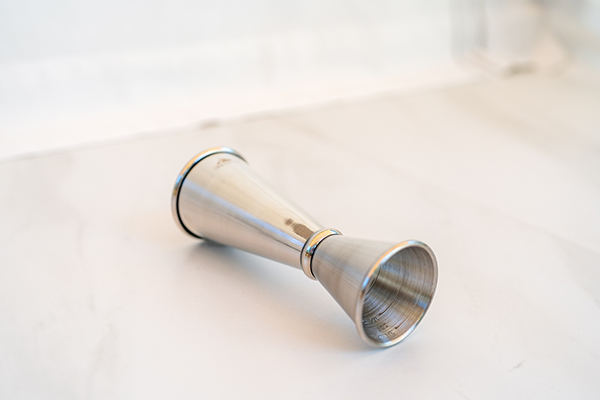
Copyright A Bar Above
Personally, I recommend getting a double-sided bar tool rather than a single cup; known as a “double jigger” or “double-ended jigger,” it’s way more versatile because there is a smaller cup that typically goes up to one ounce and then a larger cup with up to 2 fluid ounces on the other side.
Typically speaking, the standard jigger size is 1.5 to 2 ounces of liquor, but it depends on the type of jigger. I highly recommend getting a one-ounce/two-ounce jigger rather than one with only a 1.5 oz shot capacity level because so many cocktail recipes call for a full 2 ounces.
From experience, let me just tell you that it’s so annoying to be measuring amounts of liquor twice for each drink because your jigger only has a 1.5-ounce marking– especially behind the bar on a busy night or at a crowded cocktail party.
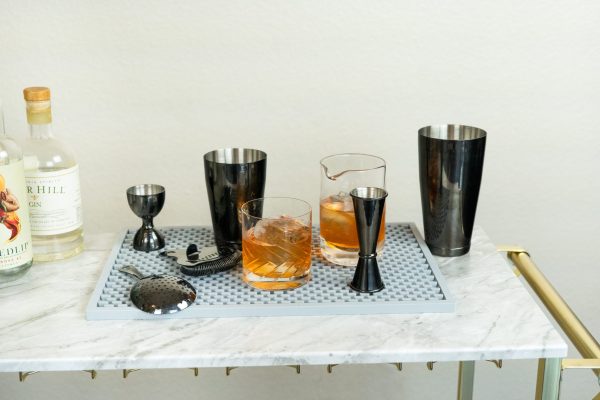
Copyright A Bar Above (both jiggers now available in black)
STYLE OF JIGGERS
The common jigger comes in a variety of shapes, but we have two favorite jigger shapes that we sell in our shop: Japanese style jigger and a bell jigger.
Now, which you choose really is a personal preference. Both styles offer units of measurement every 1/4 ounce, with full cup markings being 1 ounce on one side and 2 ounces on the other. So it’s really just about feel and aesthetics when choosing between the two.
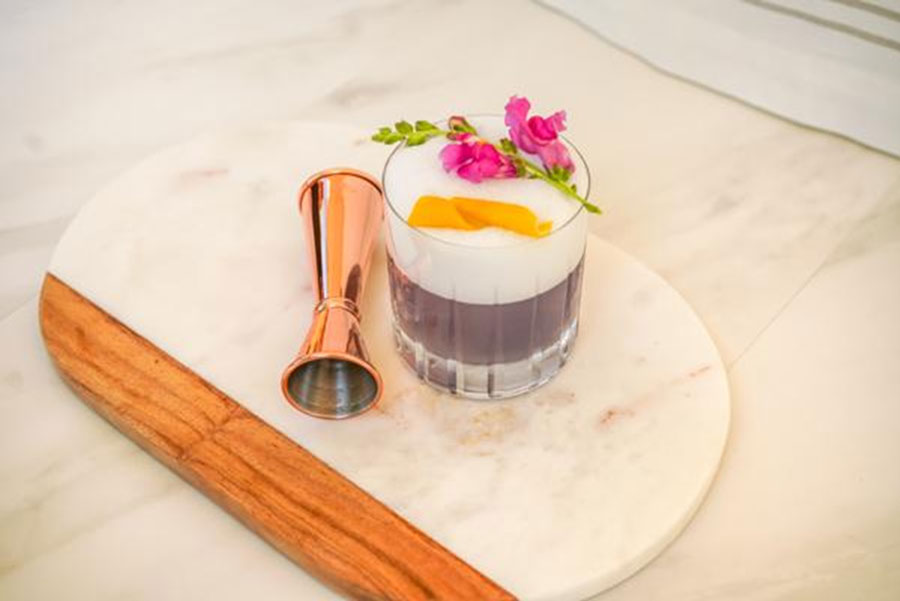
Copyright A Bar Above
Japanese jigger: Featuring a more elongated neck and narrow base, our stainless steel Japanese jigger is double-welded in the middle so that the cups don’t break off if you accidentally drop it.
It’s slender, and many people like the ergonomic feel between their pointer and middle fingers as they hold it at the knuckles (a common bartender trick).
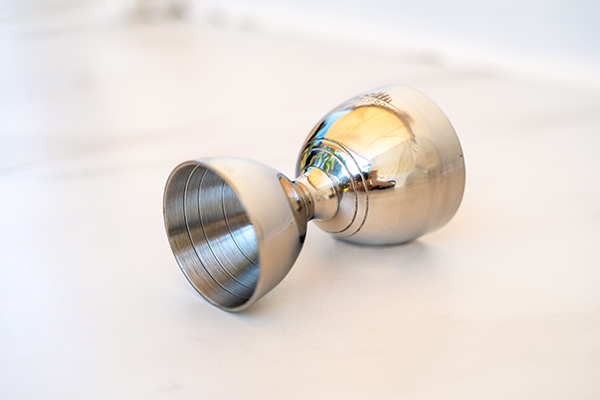
Copyright A Bar Above
Bell jigger: This vintage-style, wider cocktail jigger is designed not to tip easily with its larger base. But the cups curve up in a way that keeps the liquid in… So you won’t be spilling everywhere when you pour. Of course, it’s also double-welded for maximum durability.
If you do a quick Amazon search, you’ll also see what looks like a cup jigger— a double-sided conical jigger with really wide cups on either side, known as a classic cocktail jigger. While these are a popular option, they aren’t our favorites because they tend to hold less; plus, the wider, flat mouth makes it really easy to spill, as it doesn’t curve in like the bell jigger.
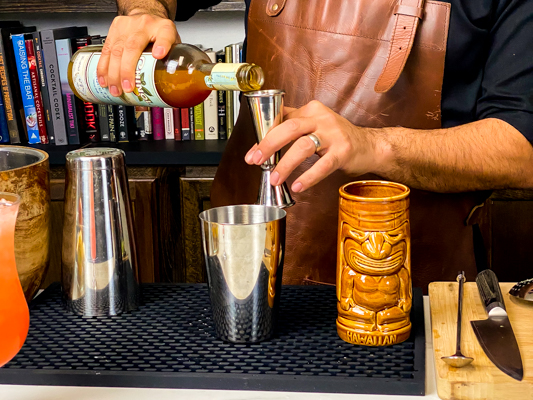
Copyright A Bar Above
MATERIAL
It makes sense that what your bar jigger is made of will affect its lifespan. While there are some that are made of plastic (make sure they are food-safe!), those tend to crack pretty easily, so we don’t recommend them.
Professional bartenders– myself included– prefer stainless steel alcohol jiggers because the material is stronger and will last longer. Because bartender jiggers get sticky with alcohol, just make sure yours is dishwasher-safe and easy to clean.
Stainless Steel Japanese Style Jigger
Japanese style jiggers look great and usually have multiple etchings on the inside, allowing them to measure multiple quantities. However, they are generally a bit more expensive than traditional jigger sets.

Copyright A Bar Above
TIPS FOR USING JIGGERS:
1. Make sure that you know how to measure properly with each style. With the classic and the Japanese styles of jiggers, you want to fill them up so that the meniscus (the curve of the liquid) forms over the top of the jigger.
2. Pour your thinnest ingredients first. If you pour a purée first, for example, and there is some residue inside the jigger… you just cannot get a precise pour on the next ingredient you add. I save the thick ingredients for the very last measure.
3. If you work in a fast-paced cocktail bar, you can actually hold your double bartender jigger between your ring and middle fingers while doing other tasks! With a little practice, you can become very fast at precision pouring this way.

Copyright A Bar Above
OK, so that’s the gist of my jigger knowledge! Hope these tips and tricks were helpful, and definitely check out our very own jiggers in our shop. (They really are the best, but maybe I’m just biased…)
Do you have any recommendations for other skills needed behind craft bars? I would love to hear your suggestions!





one little nuance on the jiggers — having a meniscus at the top adds about 10% to the volume. which in my opinion is a good thing 🙂
(44 oz becomes 49!)